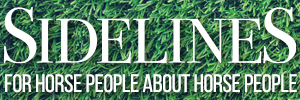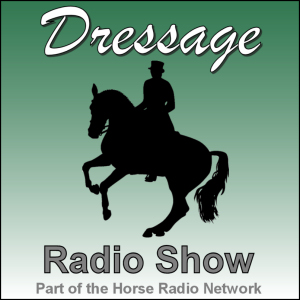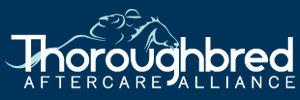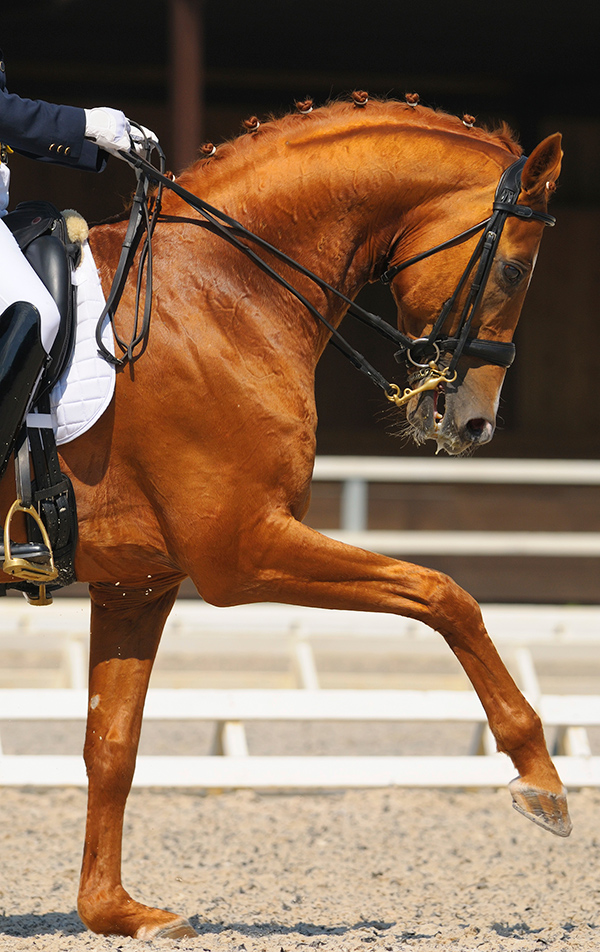
Dressage is an equestrian sport that tests the obedience, flexibility, and athleticism of a horse and rider. The word "dressage" comes from the French word "dresser," which means "to train." Dressage is often referred to as "the highest expression of horse training" because it requires the horse to be highly responsive to the rider's commands.
A dressage horse is a horse that has been specifically trained for the sport of dressage. These horses are typically tall and athletic, with a long neck and sloping shoulders. They are also known for their calm and willing temperaments.
Dressage competitions are judged on a number of factors, including the horse's obedience, gaits, and ability to perform a variety of movements. The highest level of dressage competition is the Olympic Games.
Here are some of the movements that a dressage horse might perform:
Passage: A slow, collected gait in which the horse's legs are lifted high and the back is arched. Piaffe: A trot performed in place, with the horse's hooves making a tapping sound on the ground. Pirouette: A turn on the haunches, with the horse's body moving in a circle but its feet remaining in the same spot. Lateral movements: Sideward movements such as shoulder-in and haunches-in.
Dressage is a challenging but rewarding sport for both horses and riders. It requires a high level of skill and training, but it can also be a great way to build a strong bond between horse and rider.
Here are some of the benefits of dressage for horses:
- Increased flexibility and range of motion
- Improved muscle tone and strength
- Enhanced mental focus and concentration
- Reduced stress levels
- Increased bonding with the rider
Here are some of the benefits of dressage for riders:
- Improved posture and balance
- Increased core strength
- Enhanced coordination and timing
- Reduced stress levels
- Increased sense of accomplishment
If you are interested in learning more about dressage, we recommend checking out the following resources:
- The United States Dressage Federation (USDF)
- The International Equestrian Federation (FEI)
- The Dressage Foundation
Dressage - United States
USA - Clubs and Associations
- Intercollegiate Dressage Association
- Interscholastic Equestrian League
- The Dressage Foundation
- US Dressage Federation
- US Dressage Federation - GMO/IMO Listing by Region
- US Equestrian - Team USA
- US Equestrian Federation
- USEF Affiliates Verification Service
USA - Region 1 - Clubs and Associations - Delaware, Maryland, New Jersey, North Carolina, Pennsylvania, Virginia, West Virginia, Washington DC
- Charles River Dressage Association - MA
- Commonwealth Dressage and Combined Training Association - VA
- Delaware Valley Combined Training Association - PA
- Dressage in the Carolinas - NC
- East Coast Regional Dressage Association - NJ
- Eastern States Dressage & Combined Training Association- PA
- French Creek Dressage Association - PA
- International Equestrian Organization - PA
- Lehigh Valley Dressage Association - PA
- Maryland Dressage Association - MD
- North Carolina Dressage Association - NC
- Oley Valley & Combined Training Association - PA
- Potomac Valley & Combined Training Association - MD
- VADA / Nova - Virginia Dressage Association Northern Virginia Chapter - VA
- Virginia Dressage Association - VA
- Western Pennsylvania Dressage Association
USA - Region 2 - Clubs and Associations - Illinois, Indiana, Kentucky, Michigan, Ohio, West Virginia, Wisconsin
- Centerline Dressage - IL
- Classical Attraction Dressage Society - OH
- Dressage Federation Region 2
- Great Lakes Area Educational Dressage - MI
- Illinois Dressage & Combined Training Association - IL
- Indiana Dressage Society - IN
- Kentucky Dressage Association - KY
- Mid South Dressage and Eventing Association
- Mid West Dressage Association - MI
- Mid-Ohio Dressage Association - OH
- Northern Ohio Dressage Association - OH
- Ohio Dressage Society - OH
- Wisconsin Dressage & CT Association - WI
USA - Region 3 - Clubs and Associations - Alabama, Florida, Georgia, Carolina, Tennessee
- Alpha Dressage Association - FL
- Central Tennessee Dressage Association - TN
- Dancing Horse Dressage and Cross Training - FL
- Deep South Horse Dressage and Cross Training - FL
- Georgia Dressage and Cross Training Association - GA
- Lakeland Dressage Association - FL
- North Carolina Dressage and Cross Training Association - NC
- North East Florida Dressage Association - FL
- Orlando Dressage Association - FL
- South Carolina Dressage and Cross Training Association - SC
- South West Florida Dressage Association - FL
- South Wind Dressage and Eventing Inc. - FL
- Southeast Horse Shows - FL
- STRIDE Dressage & Driving Club - FL
- The Good Horseman Foundation - GA
USA - Region 4 - Clubs and Associations - Iowa, Kansas, Minnesota, Missouri, Nebraska, North Dakota, South Dakota
- Central States Dressage and Eventing Association -MN
- Columbia Dressage and Combined Training Association - MO
- Dressage Federation Region 4
- Eastern Iowa Dressage and Eventing Association - IA
- Kansas City Dressage Society - MO
- Kansas Dressage & Eventing Association - KS
- MHSEA - Minnesota High School Equestrian Association - MN
- Nebraska Dressage Association - NE
- St Louis Area Dressage Society - MO
USA - Region 5 - Clubs and Associations - Arizona, Colorado, Eastern Montana, New Mexico, West Texas, Utah, Wyoming
- Arizona Dressage Association - AZ
- Big Sky Equestrian Association - UT
- Dressage Federation Region 5
- Grand Valley Dressage Society
- New Mexico Dressage Association - NM
- Rocky Mountain Dressage Society - CO
- Tucson Dressage Club - AZ
- Utah Dressage Society - UT
USA - Region 6 - Clubs and Associations - Alaska, Idaho, West Montana, Oregon, Washington
- Alaska Dressage Association - AK
- Anchorage Horse Council - AK
- Central Washington Dressage Society - WA
- Dressage Federation Region 6
- Equestrian Institute Washington - WA
- Idaho Dressage & Eventing Association - ID
- Lower Puget Sound Dressage Club
- Oregon Dressage Society - OR
USA - Region 6 - Trainers, Riders and Training Establishments - Alaska, Idaho, West Montana, Oregon, Washington
USA - Region 7 - Clubs and Associations - California, Nevada, Hawaii
- Alko Equestrian Center - CA
- Aloha State Dressage Hawaii - HI
- California Dressage Society
- East Bay - CA
- Foothills - CA
- Gavilian - CA
- Golden State - CA
- Inland Communities - CA
- Lake Country - CA
- Pomona - CA
- Sacramento Valley - CA
- San Diego - CA
- San Francisco Peninsula - CA
- San Juan Capistrano - CA
- San Luis Obispo - CA
- Sierra Nevada - CA
- Sonoma - CA
- Valley Oaks - CA
- Ventura County - CA
USA - Region 8 - Clubs and Associations - Connecticut, Maine, Massachusetts, New Hampshire, New York, Rhode Island, Vermont
- Cayuga Dressage and Combined Training Inc - NY
- Central Vermont Dressage Association - VT
- Charles River Dressage Association - MA
- Connecticut Dressage and Combined Training Association - CT
- Connecticut Dressage Association - CT
- Country Farms Equestrian Center - NY
- Dressage Federation Region 8
- Eastern New York Dressage and Combined Training Association - NY
- Heritage Dressage Association - MA
- Hudson Valley Dressage Shows - NY
- Maine Dressage Society - ME
- New England Dressage Association - MA
- Southern New Hampshire Dressage and Combined Training Association - NH
- Western New York Dressage Association - NY
USA - Region 9 - Clubs and Associations - Arkansas, Louisiana, Mississippi, Oklahoma, Texas
- Alamo Dressage Association Texas - TX
- Brazos Association for Classical Horsemanship - TX
- Dallas Dressage Club - TX
- Dressage Federation Region 9
- Houston Dressage Society - TX
- Oklahoma Dressage Society - OK
- Southern Eventing and Dressage Association Louisiana - LA
- Tri-State Horsemen's Association
USA - Trainers, Riders and Training Establishments
Dressage - International
Dressage - Australia - Victoria
- Balmoral Equestrian Centre
- Equestrian Victoria
- HRCAV
- Seymour Dressage & Showjumping Club
- South Eastern Dressage Club
- Werribee Park National Equestrian Centre
Dressage - Australia - New South Wales
- ACT Equestrian Association (ACTEA)
- Albury Wodonga Equestrian Centre (AWEC)
- Alexander Park Dressage Club
- Armidale Riding Club
- Australian Equine and Livestock Events Centre (AELEC)
- Bowral Dressage Club
- Bulahdelah Dressage Club
- Central Coast Dressage Club
- Dressage New South Wales
- Dressage NSW (Clarendon Club)
- Dungog Dressage Club
- Equestrian NSW
- Far South Coast Dressage Association
- Galston Equestrian Club (GEC)
- Goulburn Dressage Club
- Hawkesbury Riding Club
- Hunter Valley Dressage
- National Capital Equestrian Club
- Northside Riding Club
- Orana Equestrian Club
- Port Macquarie Equestrian Club
- Sugarloaf Cobbitty Equestrian Association
- Sydney Dressage
- Sydney International Equestrian Center (SIEC)
- Warringah Dressage
- Young Dressage
Dressage - Australia - Northern Territory
Dressage - Australia - Queensland
- Caboolture Dressage Group
- Currumbin District Horse Club
- Lockyer Equestrian Group
- Nerang Pony Club
- Northern Districts Hack & Dressage
- Park Ridge Adult Riding Group
- Redlands and Southern Districts Equestrian Group
- Toowoomba Dressage
- Tweed Valley Equestrian Group
Dressage - Australia - South Australia
- Adelaide Hills Dressage Club (AHDC)
- Dressage Club of South Australia
- Equestrian South Australia
- Horse Federation of South Australia
- Mid South East Dressage Club
- Mount Crawford Dressage Club
- South Australian Dressage Association Inc.
- Southern Flinders Dressage Club
- Southern Vales Dressage Club
Dressage - Australia - Tasmania
Dressage - Australia - Western Australia
- Brookleigh Equestrian Centre
- Equestrian Federation of Western Australia
- Gidgegannup & Hills Equestrian Association Dressage Division
- Swan Valley Dressage Association
Dressage - Austria
- Alt Oesterreich Pferde
- Federation Equestre Nationale D'Autriche
- Landesfachverband Burgenland
- Landesfachverband Niederösterreich
- Landesfachverband Salzburg
- Landesfachverband Wien
- Pferde Austria
- Spanische Hofreitschule ( Spanish Riding School)
Dressage - Belgium
Dressage - Canada
- AERL - L’Association Equestre Régionale des Laurentides
- Alberta Dressage Association
- Alberta Equestrian Association
- Canadian Dressage Owners and Riders Association
- Canadian Sports Horse Association
- Dressage Canada
- Dressage Niagara
- Dressage Quebec
- Dressage Winnipeg
- Equestrian Canada
- Hoofbeats Dressage Club
- Horse Council British Columbia
- Manitoba Horse Council
- New Brunswick Equestrian Association
- Newfoundland Equestrian Association
- Nova Scotia Equestrian Federation
- Ontario Equestrian
- Ottawa Dressage Festival
- Prince Edward Island Horse Council
- QSLB Cadora
- Saskatchewan Horse Federation
- The London Dressage Association
- Toronto Cadora Dressage
- Victoria-Saanich Cadora
Dressage - Denmark
Dressage - France
- Academie du Spectacle Equestre
- Association Française des Cavaliers de Dressage (AFCD)
- Club Francais de Juges de Dressage ( Alternative Site )
- Ecole National d'Equitation - le Cadre Noir de Saumur
- Federation Francais d'Equitation
- France Dressage
- L'association Allege-Ideal
- Le Cheval Haute-Ecole Equitation
- Le Site Cheval
- Les Haras Nationaux
- Rhone Alpes Dressage
Dressage - Germany
Dressage - Ireland
Dressage - Italy
Dressage - Netherlands
Dressage - New Zealand
- Auckland Manukau Dressage Group
- Dressage New Zealand
- Dressage Rotorua
- Dressage Tauranga
- Dressage Waitemata
- Eastern Bay of Plenty Dressage
- Gisborne Dressage Group
- New Zealand Equestrian Organization
Dressage - Scotland
- Ayr Riding Club
- Fife Riding Club
- Gordon Dressage Group
- Riding Clubs in Scotland
- Scottish Dressage Group
- Scottish Equestrian Association
Dressage - South Africa
Dressage - Spain
- Classical Dressage Clinic - in Southern Spain
- Epona Rafael Soto Clinic Southern Spain
- Federación Cantabria
- Federación Galicia
- Federación Navarra
- Fundacion Real Escuela Andaluza Del Arte Equestre
- Real Federation Hipica Espanola
- Spanish Dressage Courses
- Valencia Equestrian Academy
Dressage - Sweden
Dressage - Switzerland
- Association des Sociétés de Cavalerie du Jura
- Association Vaudoise des Sociétés Hippiques
- Fédération Equestre Romande
- Fédération Fribourgeoise des Sports Equestres
- Fédération Genevoise Equestre
- Federazione Ticinese Sport Equestri
- Pferdesport Verband Nordwest
- Swiss Equestrian Federation
- Verband Ost Schweizerischer Reitvereine
- Zentral Schweizerischer Kavalerie und Pferdesport Verband
Dressage - United Kingdom
- Aspley Guise and District Riding Club
- British Dressage
- British Equestrian
- British Horse Society Scotland
- Charlotte Dujardin
- Cornwall Trac Group
- Equestrian Team GBR
- Flint and Denbigh Riding Club
- Hartpury Equine Events
- Hereford Equestrian Directory
- Jersey Dressage Club
- Just-So Equestrian Events
- Rochdale and District Riding Club
- Royal Windsor Horse Show
- Strathmore and District Riding Club
- The Croft Equestrian Centre
- Torfaen Riding Club
- Wellington Riding
- West Surrey Riding Club
- Windsor Park Equestrian Club
Dressage - Education, Training Systems, Academies
- Carousel Coaching ∙ Dressage & Equestrian Mindset Coaching
- Chris Irwin
- Down Centerline Dressage
- Dressage Training Online
- Dressage-Academy.com
- Enlightened Equitation
- Hartpury College
- Ida Norris Dressage, 503 Mill Pond Road, Benson, Vermont 05743
- Mary Wanless - Ride with your Mind
- Mike Schaffer Dressage
- My Horse University ( Michigan State University )
- Pferdesportverband Weser-Ems
- Positive Riding - Henrik Johansen
- The Balance Organization
- Victory Land Dressage
Dressage - Judge Information and Administration
Australia
International & FEI
Ireland
New Zealand
Scribing / Writing ( Pencilling )
- Dressage NSW Writer Guidlines
- Dressage Terminology - Dressage Show info
- Judging Terms - Global Dressage Forum Site
- Scribing / Writing Abbreviations - Dressage Directory
- USDF - Guide for Scribes & Abbreviations
United Kingdom
United States
Dressage - Events, Shows & Festivals
The Making of a Dressage Trainer
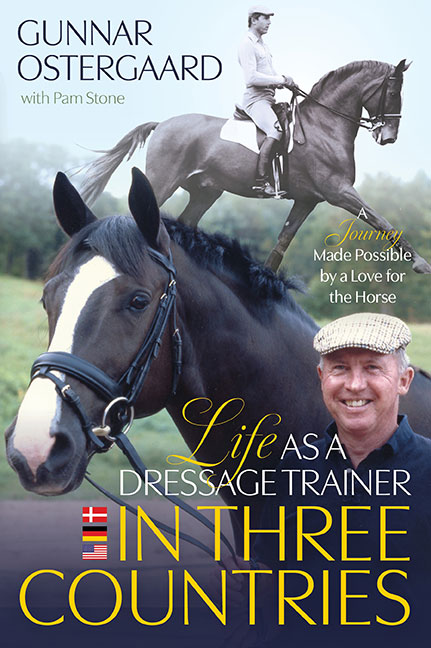
The following is an excerpt from Life as a Dressage Trainer in Three Countries, by Gunnar Ostergaard, with Pam Stone
With a consistent address, and a string of students and horses to train, I was beginning to settle into my life at Frederiksdal. I felt content and confident in my ability, as all the horses in my training were developing according to my expectations. The apple of my eye was Lotus, a Hanoverian mare imported from Germany.
In those days, that was pretty impressive, as it was quite expensive to import horses from Germany. She was a beautiful mare who moved well enough to be competitive in dressage and had the bonus ability of being able to jump.
With happy anticipation, I entered Lotus in my first show since arriving back in Denmark. To be honest, I felt a little cocky. After all, I had been trained in Germany, was doing well in Denmark, and had a talented horse. Convinced that I would win, I rode what I thought was a very good, error-free test, and left the arena with a smile on my face and a pat for the mare.
When the scores were posted, I was gutted. I finished third. At the bottom of the sheet the judges had written, “Rider is sitting crooked.” How could that possibly be? How could I have not felt that?
I was mortified, and wished the ground would open up and swallow me whole. It is said that pride goeth before a fall, and it certainly did with me. That day, I wasn’t just served a slice of humble pie, I was given the whole thing.
My self-esteem in tatters, I wandered around the showgrounds to watch the other classes. I had heard of a show-jumping trainer named N.K. Hansen, who had an envious string of wealthy clients, good horses, and skilled riders.
I spotted Hansen riding a horse that was notorious for refusing, but with N.K. in the saddle, that was not an option for this horse. I watched him soar over jump after jump.
One of the things that was becoming apparent in Denmark was that I was expected to teach jumping as well as dressage. I had jumped, and competed in jumping—it was required to earn my bereiter certificate—but my focus in Flensburg had been dressage. In Denmark, however, you both jumped and rode dressage.
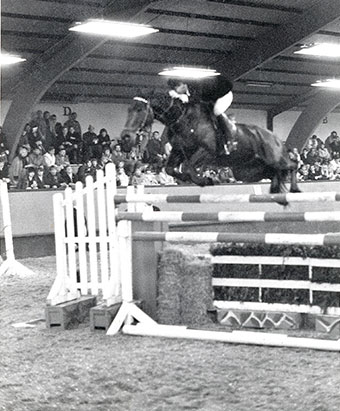
There was only one thing to do: find a book on it; memorize the details such as distances and combinations, as well as teaching methods; and then try to sound as if I knew what the hell I was talking about. In the end, I absorbed the material, and sounded quite convincing.
While my students weren’t on the road to becoming professional show jumpers, they improved, and our lessons went well. Luckily, these students only jumped once a week, and the indoor wasn’t nearly big enough for advanced jumping!
I enjoyed adding more jumping to my own personal repertoire, even if I didn’t always come home with a ribbon. Lotus, with her abilities in both dressage and jumping, also possessed the frustrating ability to regularly drop a rail somewhere on course, thus earning four faults at competitions.
I finally found success on a Thoroughbred cross named Tonka, who had courage in spades. He was fearless. His owner found Tonka intimidating, which gave me the opportunity to take the horse to a few shows.
The one I will never forget was at one of the more impressive venues in North Zealand—the place to be in Denmark, if you wanted to seriously pursue the horse industry—and this competition was for professionals only.
In this particular class, N.K. and I were the last two left in the jump-off, and it seemed we were going to end up with a tie, as the rails had been raised to the highest point possible on the standards. Then some genius had the idea to place beer crates under the standards to raise them higher.
Impossible, today, to think that anyone would even dream of allowing such a thing, but perhaps the beer in the crates had all been consumed at the show, so no one cared. In the end Tonka and I cleared the triple bar at 6’ 4” (1.95 meters). It was the first and last time I would jump that high.
Things felt as though they were beginning to snowball in a very good way for me. One particular event that would have a profound effect on my life and career was reacquainting myself with Gunnar Andersen. I contacted him fairly soon after arriving at Frederiksdal.
We agreed that Wednesday would suit us both, and so I made the half-hour drive, and found him as affable and approachable as I had remembered.
That first Wednesday turned into a weekly visit, and I truly felt from the beginning that he was taking a special interest, even putting me on his Grand Prix horses, which was heaven on earth. This man, the face of Danish dressage for forty years, seemed to have taken it upon himself to become my mentor.
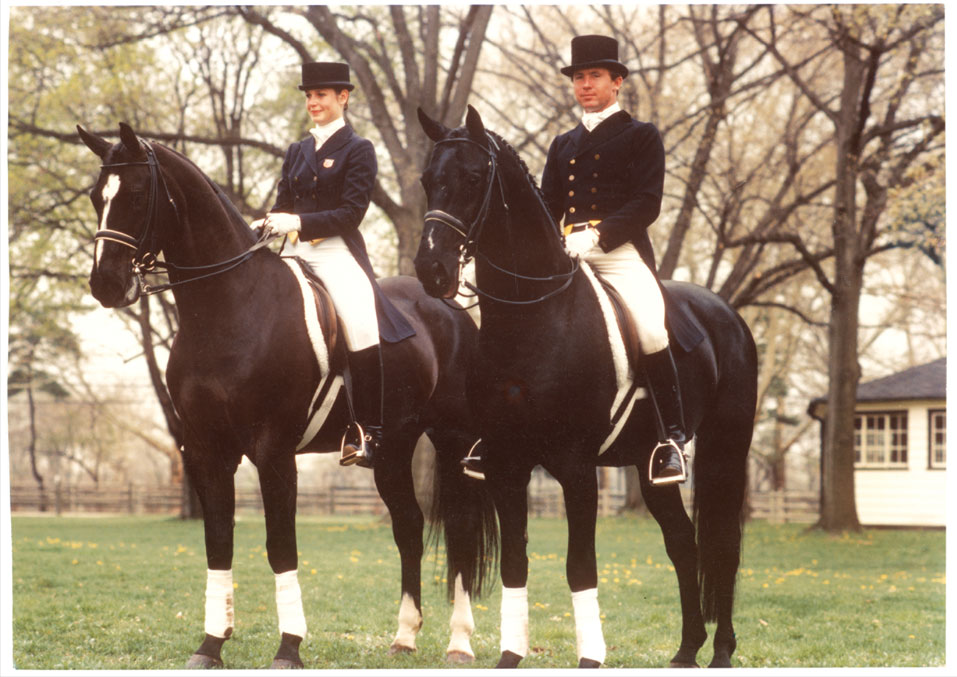
Gunnar seemingly had no ego; he remained both humble and respectful all the years I knew him. It was never about money with Gunnar —he had no desire to become a businessman, he simply lived his passion, and he was particularly keen on producing hot-blooded Thoroughbreds.
While European Warmbloods were making their mark on the competition scene, particularly in Germany, Gunnar remained faithful to his Thoroughbreds, and said that in order to bring home a ribbon, they had to be “twice as good to beat the Germans.”
And many were. His list of Thoroughbreds that made the Danish Team was long: Atmospherics, Inferno, Souliman, and C’est Bon.
I lived for Wednesdays—I couldn’t get enough. One Wednesday was particularly memorable. There was a terrific snowstorm, and I crawled along the road in my Beetle. I nearly turned around three times, as the snow was above the hubcaps and the wipers were doing little to keep the flakes from freezing across the windshield.
When I finally limped into the parking area, I got out of my car, trudged through the snow, and shoved open the massive barn door, blinking as my eyes adjusted from the blinding snow to the low light of the indoor. Before me was Gunnar, puffing away on the pipe in his mouth and performing the most exquisite piaffe I had ever seen.
The gleaming white of Talisman’s coat, as bright as the snow that swirled around me outside, was filigreed by the morning light now streaming in...It was like watching a movie: horse and rider framed in the doorway, moving from piaffe into passage and back into piaffe—classically correct and utterly breathtaking.
With his trademark droll humor, he glanced over at me and remarked nonchalantly, “Huh, didn’t think you’d make it.”
That this man would take me beneath his wing and give me the opportunity to ride all those horses...horses that he had trained and competed with renowned success.
Gunnar was unbelievably generous with his knowledge, and never made a big deal out of handing me the reins of one of these international Grand Prix horses saying, as if offering a little kid a pony ride at a fair, “Here, you can try a ride on this one.”
These were halcyon days. I was receiving training I could have only dreamt about with Gunnar, establishing a steady business for myself, and developing a social life.
This excerpt from Life as a Dressage Trainer in Three Country is reprinted with permission from Trafalgar Square Books. To order a copy in print or audio, go to: TrafalgarBooks.com
BUY NOW on Amazon
Print: Paperback
Kindle: Kindle edition
Visit Horse & Rider Books
There a more really interesting books on riding and all aspects of equestrian living in our section on Books.







